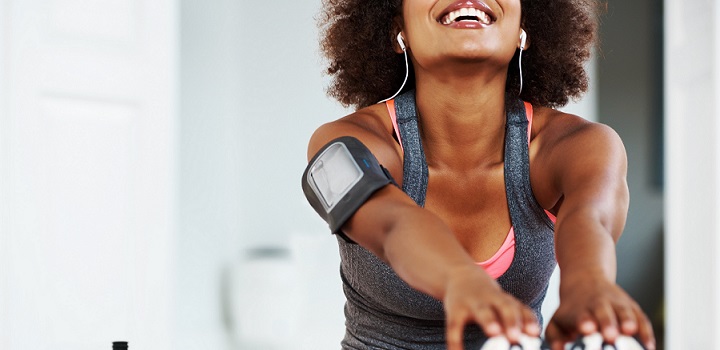
Vitality biokineticist Mari Leach says physical activity plays a key role in building immunity against the virus and contributing to our good health - both physically and mentally.
If you are healthy, moderate exercise helps you stay healthy and improves your immunity.
"Science tells us that during lockdowns and confinement, a combination of aerobic, strength, flexibility and balance exercises can improve your chances of recovering from COVID-19, if you pick up the virus," says Leach. "This is because of increased oxygen consumption in the body and muscles, including the heart, which are strengthened by exercising."
The opposite is true if you're not active. "So, moving more is a strategy to combat general unhealthy lifestyles, improve immune system functioning and cope with viral infections."
How much exercise is needed to boost your immune system?
It's recommended that healthy people do moderate-intensity exercise most days of the week. "You can tell you're exercising at the right pace when you feel your heart beating faster and you're getting out of breath, but can still hold a conversation," says Leach.
"Regular moderate-intensity exercise helps improve the function of virus-fighters in the body, called antipathogens. This, in turn, is linked to a lower severity of diseases such as COVID-19 that affect the respiratory tract."
If you're experienced with exercising and training, include some high-intensity interval training (HIIT) to improve your cardiorespiratory fitness. But, cautions, Leach, don't overdo those HIIT sessions. "Always allow your body to recover by doing moderate-intensity exercises in between," she suggests.
What's the best way to start exercising after an illness?
"The first rule for physical activity following any illness is to wait until you no longer have symptoms and have been given the all-clear from your doctor," says Leach.
She adds: "If you have been ill, start with light exercise, like walking, and expect your heart rate recovery to be slower. Pay attention to how your body responds when you start to exercise again. Avoid any strenuous exercise until your resting heart rate and training heart rate response have returned to normal."
Here's how easy it is to exercise at home
"Try to incorporate physical activity into your day, whether it's in shorter bouts or a longer session. Aim for a combination of aerobic, strength, flexibility and balance exercises in one week," says Leach.
This doesn’t have to be complicated.
For aerobic exercise:
- Walk or jog in your neighborhood but avoid crowded spaces and keep to physical distancing rules.
- Play some music and walk briskly around the house or up and down the stairs for 10 to 15 minutes, two or three times a day.
- Dance to your favourite tracks.
- Jump rope (if your joints can handle it).
- Follow an exercise video - there are many available for free and you can earn Vitality points for exercising in this way.
- Use home cardio machines if you have them.
- Go for a bicycle ride or a hike.
- Do some gardening.
- Play active games with your family - try the exercise challenges for kids and teens from Vitality.
For muscle strength and balance:
- Do an online yoga class - deep breathing and mindfulness can also reduce anxiety.
- Find ways to do simple muscle-strengthening exercises around the house, such as:
- Squats or sit-to-stands from a sturdy chair
- Push-ups against a wall, the kitchen counter or the floor
- Lunges or single-leg step-ups on stairs
Start (small) now and benefit sooner
The greatest health benefits from exercise come when inactive people become moderately active. Making exercise a regular part of your life can have a major impact on your health.
"The key is to choose activities you enjoy, starting with a few minutes a day and building up to moderate-intensity, regular exercise," says Leach.

Visit Vitality at Home
Vitality brings you Vitality at Home so you can continue to achieve your fitness and nutrition goals.
We're pulling out all the stops to help you stay healthy and rewarded at home.